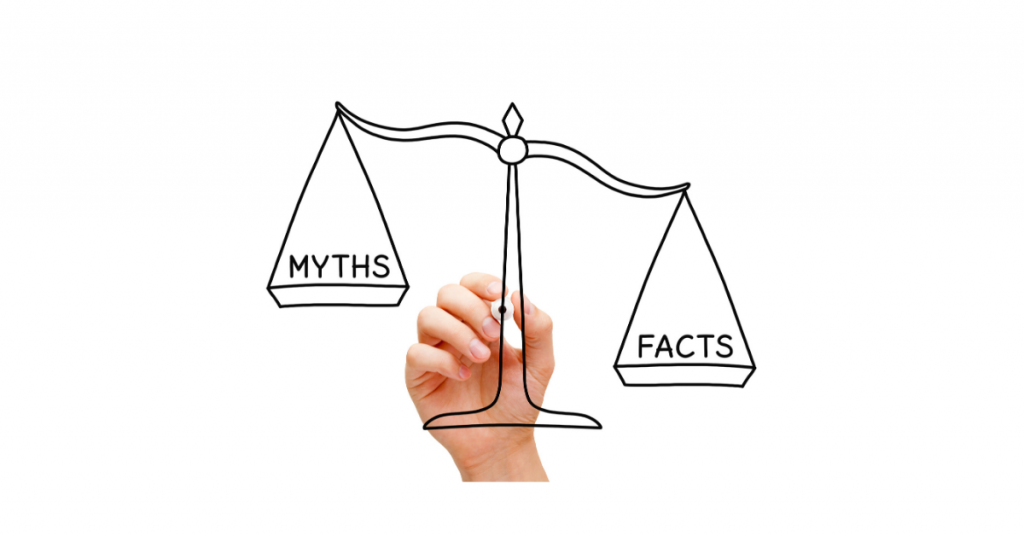Myth Or Fact?
Sports concussion myths are still common, despite increased media focus and education in recent years.
Here are some of the many myths about concussions and the facts.
How And In What Sports Do Concussions Occur?
Myth: A concussion only occurs as a result of a direct blow to the head.
Fact: A concussion may be caused by a direct blow to the head, face, neck, or elsewhere on the body if the force of the impact is transmitted to the head. [1,2]
Myth: Players suffer concussions only when hit on a particular part of the head and the force of the blow to the head reaches a certain impact magnitude
Facts:
- Recent studies of college football players have shown that concussions occur from blows to different parts of the head and of varying magnitude. A relatively minor impact may result in a concussion while a high-magnitude hit to the head may not. There is, therefore, no way to know for certain whether a particular blow will lead to a concussion.
- Concussions are caused by two types of accelerations or forces: linear (a straight-on hit) and rotational (a twisting motion). On virtually every hit to the head, both linear and rotational accelerations are present. Researchers and other experts believe that, of the two, rotational forces, because they cause a rapid “spinning” of the brain, are more injurious.
- One study suggests that high school football players, especially those playing the so-called “skill” positions (i.e. quarterback, running back, wide receiver) suffer more intense impacts to their heads than their college counterparts and hence are more susceptible to concussion and severe spinal injury.
- Impacts to the top of the head tend, however, to be higher in magnitude and more likely to cause a concussion.
Myth: Only athletes in aggressive contact sports like football, hockey, and lacrosse suffer concussions.
Fact: While football has the highest number of concussions, and concussions are common in hockey, lacrosse, and wrestling, concussions also occur frequently in boys’ and girls’ soccer and basketball, and cheerleading. For statistics on the rates of concussions in high school sports, click here.
Myth: Football players participating in helmet-only practices are at lesser risk of concussion because they aren’t hit as hard as in games or scrimmages.
Fact: The results are conflicting. One recent study found that head impacts sustained in helmets-only practices were as severe as games or scrimmages. As the study’s authors concluded, “There seem to be no ‘light’ days for football players.” Another, more recent study [1] however, found that impacts occurred more frequently and with greater intensity during games, not practices. A 2012 study[10] a small group of youth football players ages 7 to 9 found that most of the high impact hits occurred during practices, not games.
Concussion Signs/Symptoms/Severity
Myth: All concussions are the same.
Fact: No two concussions are identical. The symptoms can be very different, depending on a variety of factors, including the degree of force and location of the impact, the degree of metabolic dysfunction, tissue damage and recovery time, the number of previous concussions sustained by the athlete, and the time between injuries. They do, however, share certain characteristics.
Myth: A concussion occurs only when an athlete experiences a loss of consciousness (LOC).
Fact: Concussions can occur with or without LOC. In fact, the vast majority of concussions (more than 95% in a recent study of concussion among high school athletes)[5] do not result in LOC. As recently as 2007, 42% of youth coaches still believed that a concussion only occurred when an athlete loses consciousness. However, in a later study of parents of young rugby players published in 2009, 95% reported that a player did not need to be knocked out to have been concussed, suggesting that efforts to dispel this myth may be working. [5]
Myth:The signs and symptoms of concussion are always apparent immediately after injury.
Fact: While signs of concussion (those characteristics that can be observed by people other than the athlete) and symptoms (experienced and reported by the athlete him or herself) are often present or observable at the time of injury, they may not appear until several hours or even days or weeks later. In fact, delayed onset of signs and symptoms is more likely in younger athletes. Athletes, parents and other caregivers thus need to be alert to the occurrence of such delayed signs or symptoms or deteriorating mental status, which may signal the presence of a serious, life-threatening brain injury, such as subdural hematomas (bleeding on the brain).
Myth: Girls recover from concussions at the same rate as boys.
Fact: The jury is still out on this one. A 2007 study in the Journal of Athletic Training found that girls took much longer than boys for symptoms to resolve and to return to play, although the reasons for delayed recovery remain unclear, but a 2011 study reported in the same journal found that girls took about the same time as boys for their symptoms to clear and to return to play.
sources
1. Broglio, et. al, Head Impacts During High School Football: A Biomechanical Assessment, J Athl Tr. 2009; 44(4): 342-349.
2. P. McCory, et al. Consensus statement on concussion in sport: the 4th International Conference on Concussion in Sport held in Zurich, November 2012.Br J Sports Med. 2013;47;250-258.
3. McCrea M, Hammeke T, Olsen G, Leo P, Guskiewicz K. Unreported concussion in high school football players – Implications for prevention. Clin J Sport Med 2004;14:13-17.
4. Halstead, M, Walter, K. Clinical Report – Sport-Related Concussion in Children and Adolescents. Pediatrics.2010;126(3):597-615.
5. Meehan W, d’Hemecourt P, Comstock D, High School Concussions in the 2008-2009 Academic Year: Mechanism, Symptoms, and Management. Am J Sports Med. 2010;38(12):2405-2409 (accessed December 2, 2010 at http://ajs.sagepub.com/content/38/12/2405.abstract?etoc).
original article
https://momsteam.com/health-safety/debunking-common-sports-concussion-myths?page=0%2C2

